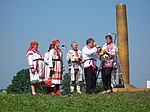
Modern paganism, also known as contemporary paganism and neopaganism, is a term for a religion or a family of religions which is influenced by the various historical pre-Christian beliefs of pre-modern peoples in Europe and adjacent areas of North Africa and the Near East. Although they share similarities, contemporary pagan movements are diverse and as a result, they do not share a single set of beliefs, practices, or texts. Scholars of religion often characterise these traditions as new religious movements. Some academics who study the phenomenon treat it as a movement that is divided into different religions while others characterize it as a single religion of which different pagan faiths are denominations.
Prav (Правь), Yav (Явь) and Nav (Навь) are the three dimensions or qualities of the cosmos as described in the first chapter of the Book of Light and in the Book of Veles of Slavic Native Faith (Rodnovery). Older sources mention only Nav and Yav concepts of ancient slavic cosmology, similar to Yin and Yang in Taoism, and Prav was not part of the concept. The literal meanings of the Prav, Yav, and Nav words, are, respectively, "Right", "actuality" and "probability". They are also symbolised as a unity by the god Triglav. Already Ebbo documented that the Triglav was seen as embodying the connection and mediation between Heaven, Earth and the underworld / humanity; these three dimensions were also respectively associated to the colours white, green and black as documented by Karel Jaromír Erben.

Mordovia, officially the Republic of Mordovia, is a republic of Russia, situated in Eastern Europe. Its capital is the city of Saransk. As of the 2010 Census, the population of the republic was 834,755. Ethnic Russians (53.1%) and Mordvins (39.8%) account for the majority of the population.

The Erzya language, also Erzian or historically Arisa, is spoken by approximately 300,000 people in the northern, eastern and north-western parts of the Republic of Mordovia and adjacent regions of Nizhny Novgorod, Chuvashia, Penza, Samara, Saratov, Orenburg, Ulyanovsk, Tatarstan and Bashkortostan in Russia. A diaspora can also be found in Armenia and Estonia, as well as in Kazakhstan and other states of Central Asia. Erzya is currently written using Cyrillic with no modifications to the variant used by the Russian language. In Mordovia, Erzya is co-official with Moksha and Russian.
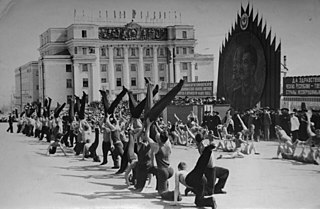
Mordvins is an official term used in the Russian Federation to refer both to Erzyas and Mokshas since 1928.
Erzya or Erzia may refer to:
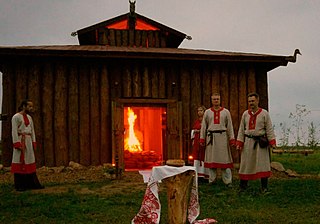
The Slavic Native Faith, commonly known as Rodnovery and sometimes as Slavic Neopaganism, is a modern Pagan religion. Classified as a new religious movement, its practitioners hearken back to the historical belief systems of the Slavic peoples of Central and Eastern Europe, though the movement is inclusive of external influences and hosts a variety of currents. "Rodnovery" is a widely accepted self-descriptor within the community, although there are Rodnover organisations which further characterise the religion as Vedism, Orthodoxy, and Old Belief.
Mastorava (Масторава) is an Erzya epic poem compiled based on Erzya mythology and folklore by Aleksandr Sharonov, published in 1994 in the Erzya language, with a Moksha language version announced.
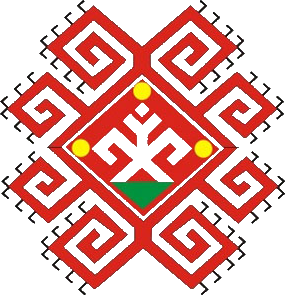
The Mari religion, also known as Mari paganism, is the ethnic religion of the Mari people, a Volga Finnic ethnic group based in the republic of Mari El, in Russia. The religion has undergone changes over time, particularly under the influence of neighbouring monotheisms. In the last few decades, while keeping its traditional features in the countryside, an organised Neopagan-kind revival has taken place.

Tyushtya IPA ['tʲuʃtʲɑ] is Moksha demigod, son of Atäm and mortal girl. Tyushtya is able to turn into White horse. The good harvest depends on him. He was the first Moksha King chosen by clan elders. The first Moksha title for the king derives from his name Moksha: тюштян, romanized: tyushtyan, lit. 'king' IPA [tʲuʃ'tʲɑn].

Torama is a music group from Saransk, Mordovia in Russia, performing traditional songs and music of Mordvin ethnic groups, namely Erzya, Moksha, Shoksha, and Qaratay.
Udmurt Vos is the ethnic religious revival of the Udmurts, a Finnic people inhabiting the republic of Udmurtia in Russia. Among the Udmurts, as in other Finnic republics in the Volga region, the revival of paganism is inextricably intertwined with the revival of national-ethnic culture and awareness.
Abkhaz neopaganism, or the Abkhaz native religion, is the contemporary re-emergence of the ethnic religion of the Abkhaz people in unrecognized Abkhazia, a revitalisation which started in the 1980s. The most important holy sites of the religion are the Seven Shrines of Abkhazia, each one having its own priestly clan, where rituals and prayers began to be restored in the 1990s.
Uralic neopaganism encompasses contemporary movements which have been reviving or revitalising the ethnic religions of the various peoples who speak Uralic languages. The movement has taken place since the 1980s and 1990s, after the collapse of the Soviet Union and alongside the ethnonational and cultural reawakening of the Finnic peoples of Russia, the Estonians and the Finns. In fact, Neopagan movements in Finland and Estonia have much older roots, dating from the early 20th century.
Caucasian Neopaganism is a category including movements of modern revival of the autochthonous religions of the indigenous peoples of the Caucasus. It has been observed by scholar Victor Schnirelmann especially among the Abkhaz and the Circassians.
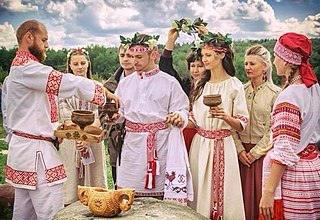
Slavic Native Faith or Slavic Neopaganism in Russia is widespread, according to some estimates from research organisations which put the number of Russian Rodnovers in the millions. The Rodnover population generally has a high education and many of its exponents are intellectuals, many of whom are politically engaged both in the right and the left wings of the political spectrum. Particular movements that have arisen within Russian Rodnovery include various doctrinal frameworks such as Anastasianism, Authentism, Bazhovism, Ivanovism, Kandybaism, Levashovism, Peterburgian Vedism, Slavic-Hill Rodnovery, Vseyasvetnaya Gramota, the Way of Great Perfection, the Way of Troyan, and Ynglism, as well as various attempts to construct specific ethnic Rodnoveries, such as Krivich Rodnovery, Meryan Rodnovery, Viatich Rodnovery. Rodnovery in Russia is also influenced by, and in turn influences, movements that have their roots in Russian cosmism and identify themselves as belonging to the same Vedic culture, such as Roerichism and Blagovery.

Slavic Native Faith and Christianity are mutually critical and often directly hostile to each other. Among the Slavic Native Faith critiques are a view of religious monotheism as the root of mono-ideologies, by which is meant all ideologies that promote "universal and one-dimensional truths", unable to grasp the complexity of reality and therefore doomed to failure one after the other. These mono-ideologies include Abrahamic religions in general, and all the systems of thought and practice that these religions spawned throughout history, including both Marxism and capitalism, the general Western rationalistic mode of thinking begotten by the Age of Enlightenment, and ultimately the technocratic civilisation based on the idea of possession, exploitation and consumption of the environment. They are regarded as having led the world and humanity to a dead-end, and as destined to disappear and to be supplanted by the values represented by Rodnovery itself. To the "unipolar" world created by the mono-ideologies, and led by the American-influenced West, the Rodnovers oppose their political philosophy of "nativism" and "multipolarism".
Mordvins is an obsolete official term for the Erzyas and Mokshas as a single ethnic group in Russian Federation since 1928.
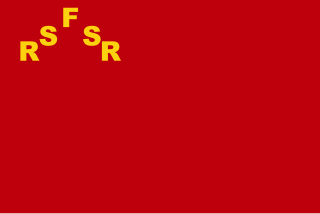
The Erzya-Moksha Autonomy Erzya: Эрзя-Мокшонь Автономной область, Moksha: Эрзя-Мокшень Автономнай область, Russian: Эрзя-Мокшанская Автономная область was a name of an administrative division of the Russian SFSR, Soviet Union approved by Executive Committee of Erzya-Moksha Autonomous oblast before July 16, 1928. The Executive Committee name didn't change till 1930. The conventional name of the Oblast was changed to Mordvin Okrug on July 16, 1928. The administrative centre first was planned to be the oldest Oblast city Temnikov but it was established in Saransk because of the railroad absence in Temnikov.

Mono-ideologies are a concept in Russian political and philosophical discourse.

